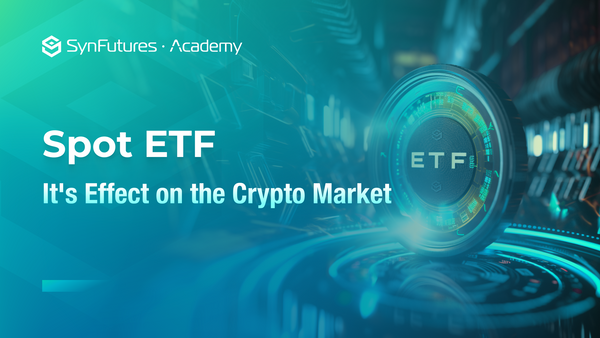DeFi vs. CeFi: The Fight for the Soul of Crypto
When Satoshi Nakamoto created bitcoin, he aimed to transfer control of the financial system from a few elite institutions to the public. Decentralization has always been the central tenet of the crypto ecosystem, as centralized crypto platforms would only switch power from one institution to another instead of transferring it to the people.
Despite starting with such lofty goals, the ecosystem soon ended up being dominated by several centralized organizations, often controlled by one or more individuals. As we have seen in recent months, this has led to some of the biggest collapses in crypto history, including the fallout of FTX, Celcius, BlockFi, and Terra Luna. These failures have hurt the users of the platforms and the entire industry.
So, how did the ecosystem that was designed to be decentralized end up being dominated by centralized organizations? Let’s examine the reasons.
The Rise of CeFi in Crypto
One of the first centralized crypto institutions, which was also one of its biggest failures, was Mt. Gox. The exchange launched in 2011 and quickly became the biggest bitcoin exchange in the world. As the first exchange in this space, Mt. Gox became synonymous with buying and selling bitcoin, much like Googling is synonymous with searching the internet. At its peak, Mt. Gox was handling over 70% of all bitcoin transactions worldwide, and the reasons why it was so popular are the same reasons why other CeFi platforms are popular today:
- First Mover Advantage: Centralized exchanges were created long before DeFi platforms. This is hardly surprising, as DeFi platforms are built from scratch, while centralized exchanges are just websites with bank accounts and crypto wallets.
- Ease of Use: Most users are happy to store their bitcoin on the exchange and not have to deal with creating their own wallet and storing the key. These exchanges offer users a straightforward way to buy and store multiple cryptos and protect them using a single username and password. This experience is identical to other web 2.0 platforms, which most users are already familiar with. In comparison, setting up a crypto wallet is more complicated, and users must set up more than one wallet to store multiple cryptos.
- Fiat On-Ramp: DeFi has focused on crypto-to-crypto transactions but converting fiat currency into crypto has stayed in the domain of CeFi. This is due to regulations in setting up a fiat currency mechanism, which requires performing KYC (Know Your Customer) and connecting bank accounts, actions that DeFi projects are unwilling or unable to take.
- The belief that Centralized Exchanges are safer: DeFi can be a scary place for new entrants. Users may hear how millions of dollars are stolen from DeFi through hacks, exploits, and other logic attacks. There is also the additional fear of losing the private key, which would result in all the money being drained from the wallet. Once the private key is lost, there is no way to get control of the wallet, which is frightening for most new users.
Unlike CeFi, DeFi can’t provide users with a simple additional layer of protection like two-factor authentication, nor can it freeze their funds once users complain about their account being hacked. All these factors make users assume that CeFi is safer than DeFi. But as we know, this is far from the truth.
The Perils of CeFi
Despite all the above-mentioned advantages, centralized exchanges have structural problems that cannot be addressed effectively. Let’s examine them one by one:
- Single Point of Failure: Many users believe keeping their crypto in centralized exchanges means they don’t have to worry about private keys or other safety measures, but this is not true. Users are still exposed to vulnerabilities like private keys being stolen or compromised. And that’s exactly what happened to Mt. Gox. In 2011, the exchange’s private key was unencrypted and stolen. This allowed the hackers to siphon off over 850,000 bitcoins worth around $14.5 billion in today’s value from their hot wallet over several years. The site eventually went offline in 2014 and filed for bankruptcy.
- Not your key, not your crypto: The aftermath of the Mt. Gox fiasco clearly showed the importance of the phrase “not your key, not your crypto.” The person who owns the private key controls the cryptocurrencies in that wallet. Users who keep their coins in exchange wallets are at the mercy of the exchanges themselves. They can get their coins only if the exchanges are willing to give them back. This is no different from the current banking system, and it’s the antithesis of the whole crypto philosophy.
- Fraud and Mismanagement: When users hand over custody of the coins, they are exposed to any impropriety by the team that controls these centralized exchanges. Either through outright fraud or mismanagement, they could lose their entire portfolio in a single day.
- Susceptible to regulations and censorship: Because centralized exchanges are controlled by a single entity and headquartered in one jurisdiction, they are as susceptible to regulations and censorship as any other banking or financial institution. We’ve already seen examples of this when several big exchanges like Binance made it mandatory for their users to perform KYC because of regulations.
How Can DeFi Out-Compete CeFi?
- Improving User Experience: As we covered earlier, using DeFi is quite technical and demands a lot from the user. While many experienced DeFi users will find it simple, many new users are overwhelmed by the complexity and the technical knowledge required to set up and trade in DeFi. For DeFi to gain more mainstream adoption, the user experience, including the user interface, must be less technical.
- Embracing Mobile Apps: Almost all major centralized exchanges provide Android and iOS apps. This is not the case with most DeFi exchanges that still concentrate on desktops. As many people have phones more than computers, providing Android and iOS apps will also go a long way in attracting new users into this ecosystem.
- Fiat On-Ramps: The DeFi industry also needs to work on integrating fiat currency into the ecosystem. Currently, the most common route to DeFi is to transfer fiat currency to CeFi, use it to buy crypto, transfer that to a personal wallet, and start using DeFi protocols. This is not only a cumbersome process but also depends on the same centralized exchanges that DeFi platforms aim to replace. A fiat on- and off-ramp is essential for DeFi growth. Projects like Stripe and Plasma are working on building such ramps, and hopefully, we will have a seamless fiat integration soon.
- Improved Safety: DeFi continues to be vulnerable to hacks and exploits. Over $3 billion has been lost to DeFi hacks in 2022. It’s easy to criticize centralized exchanges for all the scams and frauds, but if DeFi is also losing money through hacks, it’s not providing a better alternative. One way to improve safety is to have an open codebase that can be viewed publicly and shared by many exchanges. This will help improve security as any vulnerability detected on one exchange can help fix the same vulnerability on all the other exchanges that share the same code.
The future of cryptocurrency will be determined by who controls the exchanges. A centralized crypto ecosystem is no different from the current traditional banking system. It won’t bring about the earth-shattering changes many hope to get from cryptocurrencies. As such, it’s vital that DeFi not only succeeds but also completely replaces the centralized exchanges and lenders. Hopefully, we’ll see major innovations in DeFi space that help achieve that goal.
Discover SynFutures' Crypto Derivatives products: www.synfutures.com/.
Disclaimer: SynFutures Academy does not guarantee the reliability of the site content and shall not be held liable for any errors, omissions, or inaccuracies. The opinions and views expressed in any SynFutures Academy article are solely those of the author(s) and do not reflect the opinions of SynFutures. The SynFutures Academy articles are for educational purposes or information only. SynFutures Academy has no relationship to the projects mentioned in the articles, and there is no endorsement for these projects. The information provided on the site does not constitute an endorsement of any of the products and services discussed or investment, financial, or trading advice. A qualified professional should be consulted prior to making financial decisions.




